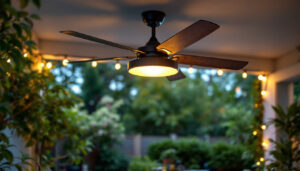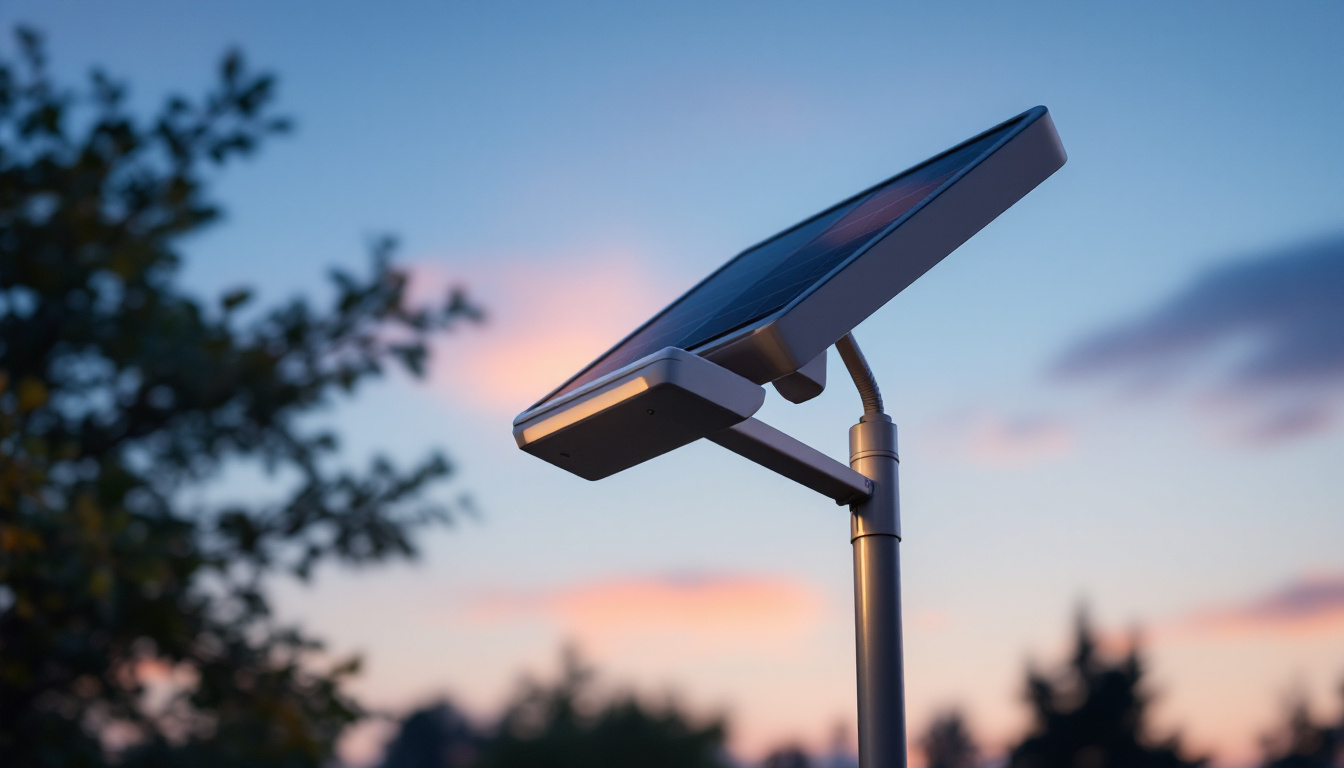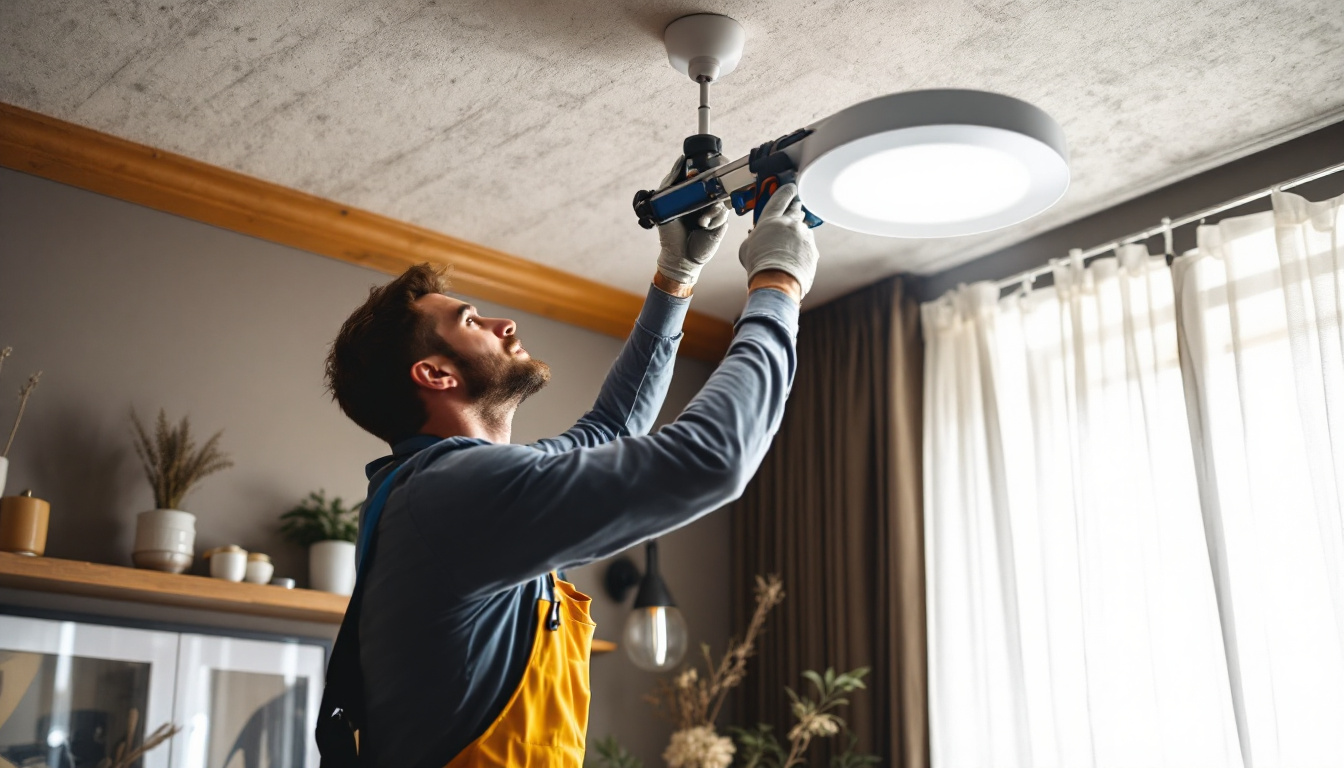

As the demand for sustainable and energy-efficient solutions continues to grow, solar lighting has emerged as a popular choice for various applications. lighting contractors are increasingly tasked with understanding and implementing solar light systems, particularly those mounted on poles. This article delves into the intricacies of solar lights on poles, providing essential insights for lighting professionals.
solar lighting technology harnesses the power of the sun to provide illumination. It consists of several key components that work together to ensure efficient operation. A typical solar light on a pole includes a solar panel, battery storage, LED lights, and a control system.
The solar panel is the heart of the system, converting sunlight into electricity. This electricity is stored in batteries, which power the LED lights during nighttime or cloudy days. The control system manages the operation of the lights, ensuring they turn on and off at appropriate times based on ambient light conditions.
LED lights are favored for their energy efficiency and longevity, making them ideal for solar applications. They consume significantly less power than traditional incandescent bulbs, allowing for longer operational periods without draining the battery. Additionally, advancements in LED technology have led to the development of smart LEDs that can adjust their brightness based on the surrounding light, further optimizing energy use and enhancing visibility when needed most.
There are various types of solar lights available for pole mounting, each designed for specific applications. Common types include street lights, pathway lights, and decorative garden lights. Street lights are typically high-powered and designed for urban environments, while pathway lights are lower in intensity and suitable for residential areas.
Decorative lights often serve aesthetic purposes in parks and gardens, enhancing the landscape while providing illumination. These lights come in various designs, from classic lantern styles to modern sleek fixtures, allowing for creative expression in outdoor spaces. Understanding the specific needs of a project will guide contractors in selecting the appropriate type of solar light. For instance, in areas prone to heavy foot traffic, brighter and more durable solar lights may be necessary to ensure safety and visibility, while in quieter residential zones, softer, ambient lighting may be more desirable to create a welcoming atmosphere.
Furthermore, solar lights can also be equipped with additional features such as motion sensors, which activate the lights when movement is detected, providing an extra layer of security. This technology not only conserves energy by ensuring lights are only on when needed but also deters potential intruders, making solar lighting a practical choice for both public and private spaces. As solar lighting technology continues to evolve, we can expect even more innovative features that enhance functionality and user experience, paving the way for smarter, more sustainable outdoor lighting solutions.
Solar lights mounted on poles offer a range of benefits that make them an attractive option for contractors and clients alike. These advantages extend beyond mere illumination, impacting environmental, economic, and operational aspects.
One of the most significant benefits of solar lighting is its positive environmental impact. By utilizing renewable energy, solar lights reduce reliance on fossil fuels, contributing to lower greenhouse gas emissions. This aligns with global efforts to combat climate change and promote sustainability.
Moreover, solar lights do not require extensive wiring, which minimizes disruption to the surrounding environment during installation. This is particularly advantageous in sensitive areas where preserving natural habitats is a priority. Additionally, many solar lights are designed with eco-friendly materials, further reducing their carbon footprint. This commitment to sustainability resonates with communities that are increasingly prioritizing green initiatives and environmental stewardship.
While the initial investment in solar lighting systems may be higher than traditional lighting, the long-term savings are substantial. Solar lights eliminate electricity costs, as they rely solely on solar energy. Additionally, maintenance costs are significantly reduced due to the durability of LED lights and the absence of complex wiring systems.
Many municipalities and organizations are also finding that solar lights can qualify for various incentives and rebates, further enhancing their cost-effectiveness. Contractors should be well-versed in these financial benefits to provide clients with comprehensive information. Furthermore, the longevity of solar lights means that replacements are infrequent, allowing for better budget forecasting and financial planning over time. As technology continues to advance, the efficiency and affordability of solar lighting solutions are expected to improve, making them an even more viable option for future projects.
Installing solar lights on poles requires careful planning and consideration. Lighting contractors must take into account several factors to ensure optimal performance and longevity of the system.
A thorough site assessment is crucial before installation. Contractors should evaluate the amount of sunlight the area receives throughout the day, as this will directly impact the efficiency of the solar panels. Shading from trees, buildings, or other structures can significantly reduce energy production.
Additionally, the terrain and soil conditions should be assessed to determine the best mounting solutions. Proper installation ensures stability and longevity, especially in areas prone to high winds or extreme weather conditions.
The height and placement of solar light poles are critical for maximizing their effectiveness. Poles should be tall enough to provide adequate illumination while minimizing light pollution. The spacing between poles should also be calculated to ensure uniform lighting coverage, especially in areas with pedestrian traffic.
Contractors should refer to local regulations and guidelines when determining the appropriate height and placement of poles. This ensures compliance with safety standards and enhances the overall effectiveness of the lighting system.
Although solar lights are generally low-maintenance, regular upkeep is essential to ensure optimal performance. Lighting contractors should educate clients on the importance of routine maintenance and provide guidance on best practices.
Solar panels should be kept clean to maintain their efficiency. Dust, dirt, and debris can accumulate on the surface, obstructing sunlight and reducing energy production. Contractors can recommend a cleaning schedule, especially in areas with high levels of dust or pollution.
In most cases, a simple rinse with water is sufficient. However, in regions with heavy rainfall or environmental factors that contribute to dirt accumulation, more frequent cleaning may be necessary.
The batteries are a crucial component of solar lighting systems, and their longevity directly affects the performance of the lights. Contractors should advise clients on monitoring battery health and replacing them as needed. Regular checks can prevent unexpected outages and ensure the lights operate efficiently.
It is also essential to educate clients on the signs of battery failure, such as reduced illumination or flickering lights. Addressing these issues promptly can extend the overall lifespan of the solar lighting system.
While solar lights on poles offer numerous advantages, they are not without challenges. Lighting contractors must be prepared to address potential issues that may arise during installation and operation.
Extreme weather conditions can pose challenges for solar lighting systems. Heavy snowfall, ice, or storms can obstruct solar panels and affect battery performance. Contractors should consider local weather patterns when designing and installing solar light systems.
Implementing protective measures, such as installing panels at an angle to shed snow or using durable materials that can withstand harsh conditions, can mitigate these challenges. Additionally, selecting high-quality components designed for extreme weather can enhance the reliability of the system.
The field of solar lighting technology is continually evolving, with advancements in efficiency and performance. Lighting contractors must stay informed about the latest developments to provide clients with cutting-edge solutions.
Investing in training and education can empower contractors to recommend the most effective systems available. This not only enhances client satisfaction but also positions contractors as knowledgeable experts in the field.
The future of solar lights on poles appears promising, with ongoing innovations and increasing adoption across various sectors. As technology continues to advance, the efficiency and capabilities of solar lighting systems are expected to improve significantly.
One of the most exciting trends in solar lighting is the integration of smart technology. Smart solar lights can be equipped with sensors that adjust brightness based on ambient light levels or motion detection. This not only enhances energy efficiency but also improves safety in public spaces.
Contractors should explore the potential of smart solar lighting systems and consider how they can incorporate these technologies into their offerings. This positions them at the forefront of the industry and meets the evolving needs of clients.
As sustainability becomes a priority for governments, businesses, and individuals, the demand for solar lighting solutions is expected to rise. Lighting contractors can capitalize on this trend by promoting the benefits of solar lights on poles, emphasizing their environmental and economic advantages.
By aligning with sustainability goals, contractors can attract a broader client base and contribute to a greener future. This not only enhances their business prospects but also fosters a positive reputation within the community.
Solar lights on poles represent a significant advancement in outdoor lighting solutions, offering numerous benefits for both contractors and clients. Understanding the technology, installation considerations, maintenance requirements, and future trends is essential for lighting professionals looking to excel in this growing market.
By embracing solar lighting technology, contractors can provide sustainable, cost-effective solutions that meet the needs of their clients while contributing to a more environmentally friendly future. As the industry evolves, staying informed and adaptable will be key to success in the solar lighting arena.
Ready to elevate your lighting projects with the most efficient and sustainable solar lights on the market? Look no further than LumenWholesale. Our commitment to quality and affordability ensures that you receive spec-grade lighting products that meet the highest industry standards. With unbeatable wholesale prices and the convenience of free shipping on bulk orders, LumenWholesale is your go-to source for premium lighting without the premium price tag. Don’t let middleman markups dim your project’s potential. Discover the best value in wholesale lighting and make the smart choice for your clients and the environment today.

Discover the must-have tools for lighting contractors working with canopy light fixtures.

Discover how choosing the right lamp bulbs can illuminate new business opportunities for lighting contractors.

Discover essential insights for lighting contractors in this comprehensive guide on light bulbs and LED tubes.

Discover the essential insights every lighting contractor needs about fluorescent light bulbs.
Get notified when NEW deals are released.
Optimize your budget with wholesale discounts.
Only top-quality, specification-grade lighting products.
No additional costs at checkout - what you see is what you pay.
We understand the unique needs of contractors.